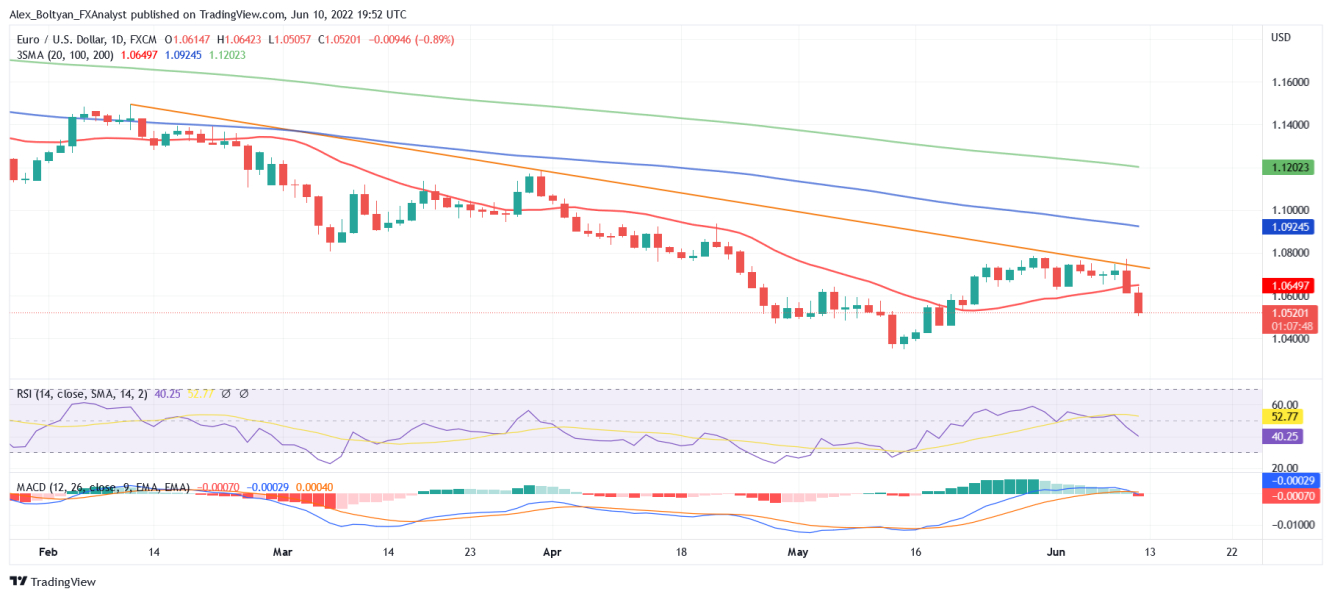The EUR/USD pair fell sharply on Friday, recording its second daily loss in a row against a backdrop of risk aversion following the release of U.S. inflation data. The EUR/USD hit its lowest level in three weeks at 1.0505 and is on track to record its second straight weekly fall.
The U.S. Consumer Price Index grew at its fastest pace in 40 years in May, with annualized inflation hitting 8.6% versus 8.3% expected. The core CPI increased by 6.0% from a year earlier.
The greenback strengthened across the board on the data, as these figures proved wrong those arguing that inflation had already peaked and added pressure on the Fed to keep on its aggressive tightening path.
On Thursday, the European Central Bank hinted at a 25 basis point rate hike in July as the EU also faces spreading inflation pressure. However, President Lagarde has signaled a more gradual approach as the ECB walks a fragile line trying to dodge stagflation in the old continent.
From a technical standpoint, the EUR/USD pair's short-term outlook has turned bearish, according to the daily chart. The inability to surpass a four-month resistance line near 1.0740 and the break below the 20-day SMA are strong bearish signals for the pair.
At the same time, both the RSI and the MACD have entered into negative territory, all of which indicate further losses.
If the EUR/USD breaks below the 1.0500 psychological level, the next support could be found at the previous swing low at 1.0470, seconded by the 1.0400 area. Loss of this level would expose the 2022 low of 1.0348.
On the other hand, the 20-day SMA at the 1.0650 area offers immediate resistance, followed by 1.0700 and the mentioned trendline at around 1.0740.


